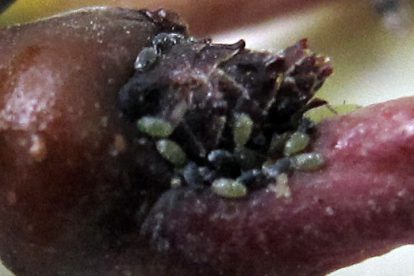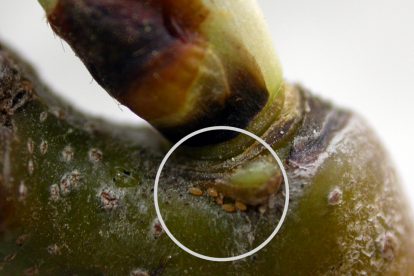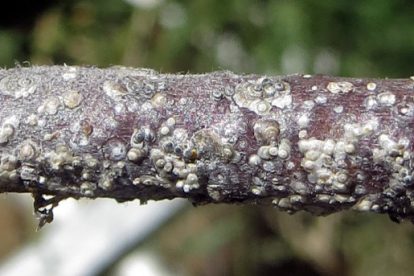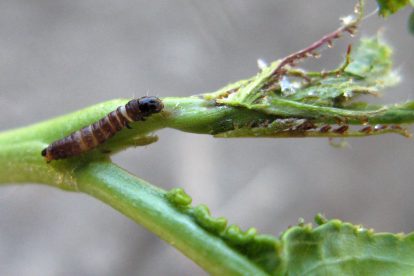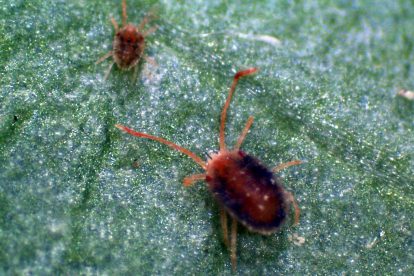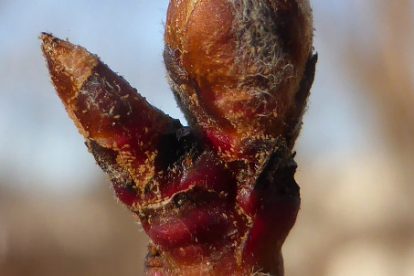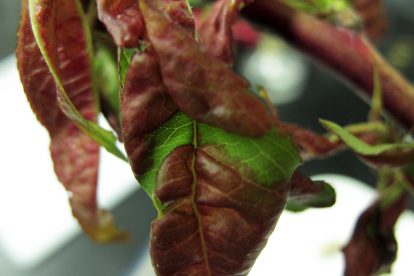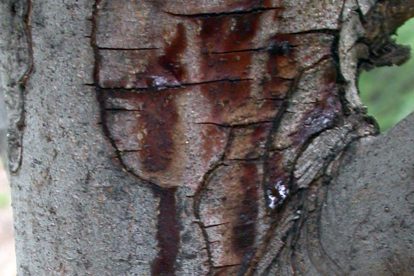These are insects and diseases that are managed with a delayed-dormant spray (oil and/or copper):
Despite the fact that we call it “dormant oil”, the timing of a horticultural oil spray is not when trees are still dormant. A better term would be a “delayed-dormant” application, because the oil should be applied after bud swell. This coincides with the increasing activity of the overwintering insect, such as aphid eggs, scale nymphs, and peach twig borer larvae.
In southern Utah, dormant oil should already have been applied. In northern Utah, it is approaching time to apply the spray in some areas.
How to Spray
Commercial growers:
- Oil should be applied at a rate of 2%, which is 2 gallons per 100 gallons of water.
- Mix oil with an insecticide such as Warrior or Asana.
- When spraying apple trees, add in copper for fire blight.
- Make sure you thoroughly cover all cracks and crevices.
Backyard growers:
- Oil should be applied at a rate of 2%, which is 5 Tbs in 1 gallon of water.
- When spraying apple trees, add in copper for fire blight.
- Make sure you thoroughly cover all cracks and crevices.
When to Spray
There are a few factors that must coincide to determine when to spray: the bud stages of your fruit trees (pictures of fruit bud stages), and temperature.
Bud Stages
The window for application extends from bud swell to when leaves just start emerging. The last point at which you can safely apply oil is:
- apple: half-inch green (ideally, application is made at green tip stage)
- pear: cluster bud
- apricot: up to first bloom
- cherry: white bud
- peach/nectarine: pre-bloom (when the pink shows through the bud)
Temperature
Only apply oil if temperatures remain above freezing (ideally above 40°F) for 24 hours after application. Ideally, oil should be applied on a clear, non-windy day in the 50 to 70°F temperature range.

